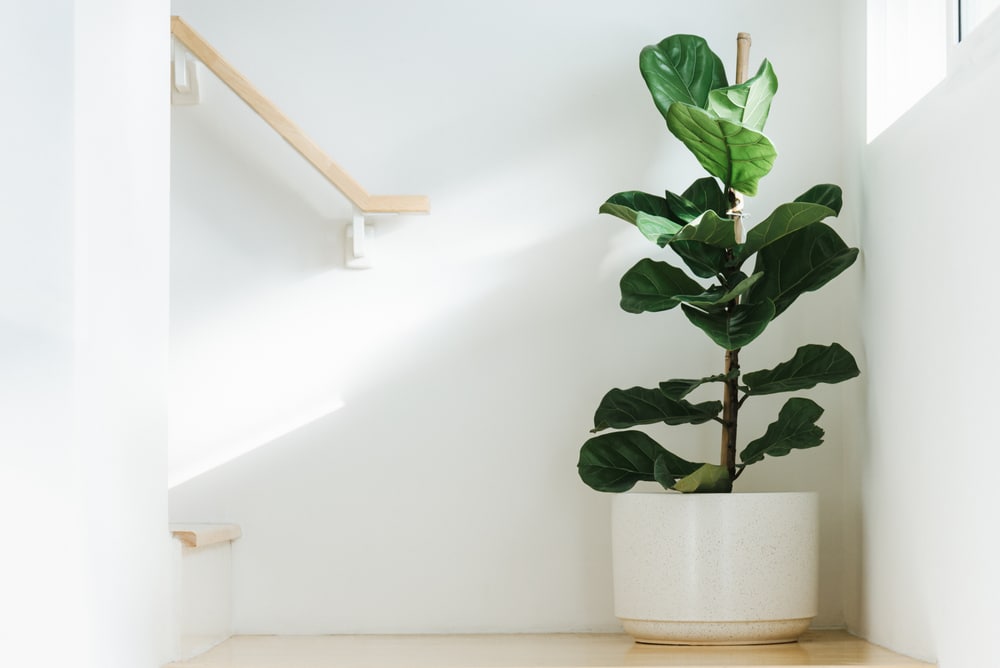
Ficus lyrate or also commonly known as fiddle-leaf fig is a common species of plant from the family of Moraceae. These flowering plants are native to western Africa and nearby areas, but these have been spread to other tropical areas as well because of how beautiful the plant looks. Fiddle leaf figs usually grow up to 12 to 15 meters tall which is quite large, but their size can be controlled using pruning techniques.
The plant is quite easy to maintain, making it a great option for beginners. With that being said, people should understand that some users might run into problems when growing these flowers in their garden. Tons of people have been reporting that the fiddle-leaf fig in their gardens is dying. If you are also running into the same issue, then going through this article should help you in understanding why the fiddle-leaf fig is dying and how the problem can be fixed.
Why Is My Fiddle Leaf Fig Dying?
- Amount Of Water The Plant Is Getting
If the fiddle-leaf fig plants in your house have started dying, then this can be quite annoying to deal with. However, people should understand that there are several reasons why this can happen. One of the main ones includes the plant not receiving proper water. When it comes to this, people must use enough water that will allow their flowering plant to breathe and keep itself healthy.
Either too much water or too less of it can cause the problem. Considering this, start by checking the condition of the leaves on your fiddle-leaf fig. If these are dry to the touch, then the plant should be watered more. On the other hand, if the leaves are droopy and wet then a lower amount of liquids should be used. Most people recommend that you only use enough water that will keep the soil around your plants moist. Pouring more than this can suffocate the roots, causing the plants to die.
You can also keep a drainage system in your soil that prevents overwatering it. Keeping this in mind, once you start using recommended levels of liquids on your fiddle-leaf fig, the problem should get fixed within a few weeks. The plant can take some time to get back to its original health which is why waiting patiently is the best option.
- Temperatures Surrounding Your Plant
Aside from the amount of water being used, the temperatures that you are keeping the plant in also play a huge role in its growth. Hence, improper temperatures can also be a solid reason for this problem. When it comes to this, people should understand that fiddle-leaf figs are mostly found in tropical areas. These are known for having a humid climate that has a lot of moisture in the air.
Considering this, as long as people keep their flowering plants in similar conditions, these should stay healthy and last them a long time. However, if these temperatures are not possible in your region, then keeping the plant away from direct sunlight can be the best option. This is because the light can drain out the moisture from your fiddle-leaf figs and cause them to die.
Partial or total shade are both great options to keep your plants in as long as they are getting all the nutrients required. If you are worried about this, then moving on to the next step should help you in understanding how it can be handled.
- Using Fertilizers On Your Plant
Finally, if you are still getting the same issue with your plants then there is a high chance that it is not getting all the nutrients required. When it comes to this, people should understand that fiddle-leaf figs require some nutrients and minerals to keep their branches, leaves, and flowers healthy. If the plant is not receiving these from the soil it is planted in, then it will eventually die. This is why using fertilizers that can provide your plant with all the nutrients required is an important step. These have to be added every few months for the best effects. Additionally, the brand that you decide to get your fertilizers from also plays a huge role in how these will perform.
